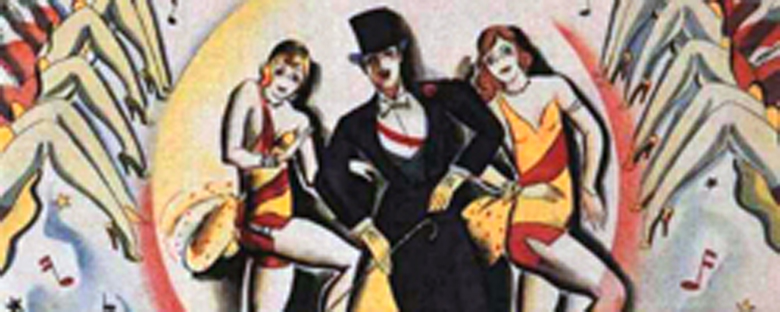Reviews
Harry Beaumont
USA, 1929
Credits
Review by Matt Bailey
Posted on 07 February 2005
Source Warner Bros. DVD
The Broadway Melody won the Academy Award for the best picture of 1929, but I am at a total loss to explain how or why. Looking at some of the other nominees—Alibi, The Hollywood Revue of 1929, and In Old Arizona—all films otherwise forgotten, I am tempted to imagine that 1929 must have been a shitty, shitty year for motion pictures. I suppose I should make concessions to the fact that the coming of sound changed, from top to bottom, back to front, the way films were made, but this cannot possibly be an excuse for all of the flaws in this film. I will allow that it explains why, when actors move out of frame, the camera seems unable or unwilling to follow them, and I will allow that it explains why, even in scenes taking place in hotel rooms or backstage dressing rooms, the camera sits at an aloof remove from the action, threatening to reveal a theatrical proscenium arch at any moment. It does not explain, however, why the screenplay requires the actors to repeat the same conversations over and over or why the musical numbers feel so flat and forced. Surely centuries of theatrical tradition would have alerted the filmmakers to what would be acceptable in what is, in essence, a filmed version of a Broadway revue.
It is peculiar that this early sound film, allegedly the first all-talking, all-singing, all-dancing film, should seem like such a musty antique when older, silent films still seem fresh and exciting today. Compared to a sprightly silent like Metropolis or The New Babylon, The Broadway Melody seems rusty and old-fashioned. The irony is that not only was the film state-of-the-art in terms of 1929 film technology (in addition to sound, one sequence was originally filmed in color), but was also filled with the fashions, dances, fads, and slang of the Jazz Age that must have made it seem like the hippest thing around upon its release. It was also popular enough to rake in $4 million at the box office. The film is now a museum piece probably of interest to no one but scholars of film history or of New York history that era. No wonder so many critics writing at the time of the film’s release felt that the coming of sound augured the end of cinema as an art form. It must have been a jarring change for film spectators to go from silent films at the zenith of artistry in 1927 and 1928 (Sunrise, The Crowd, Street Angel) to stilted, stagy sound films of 1929 that promised the equivalent of a night at a Broadway theatre but which offered much less. Fortunately for those spectators and for we who follow in their footsteps, sound films improved very much, very quickly. It was only four years later when Warner Bros. (the true kings of the early movie musical) released the twin spectaculars 42nd Street and Gold Diggers of 1933, paragons of the movie musical to this day.
The Broadway Melody would not win any kind of award today, but it is interesting to have around as an example of the kind of thing that did way back when the movies were still finding their way.
We don’t do comments anymore, but you may contact us here or find us on Twitter or Facebook.



